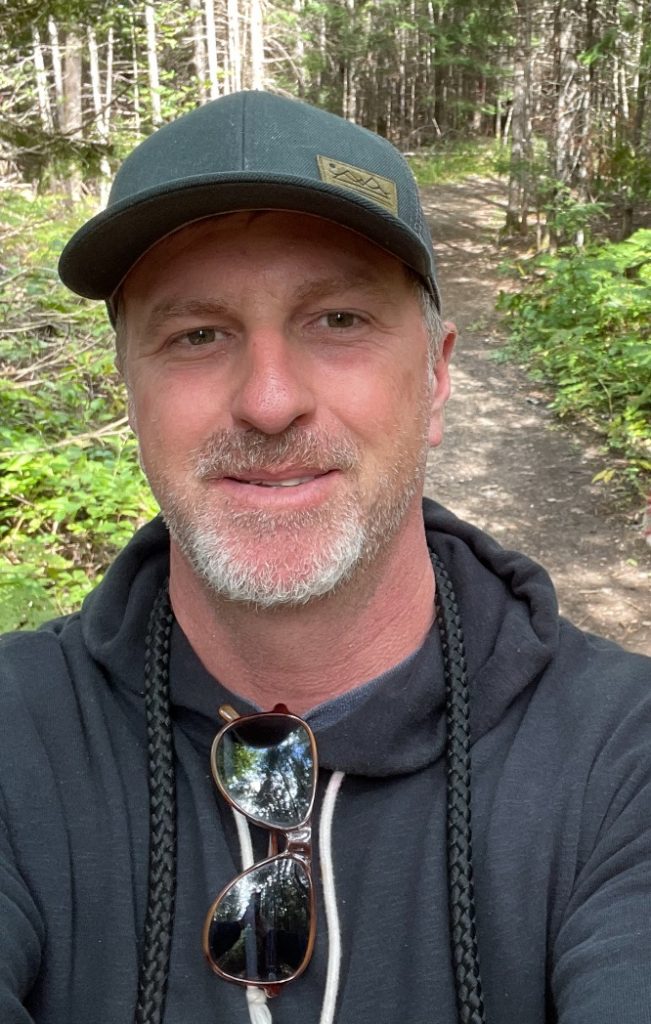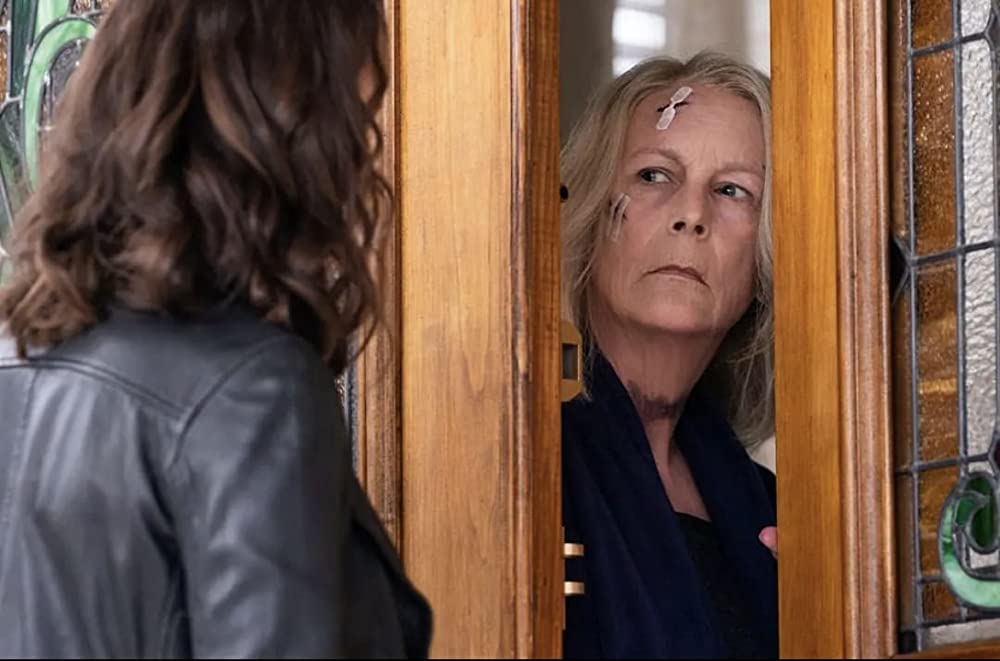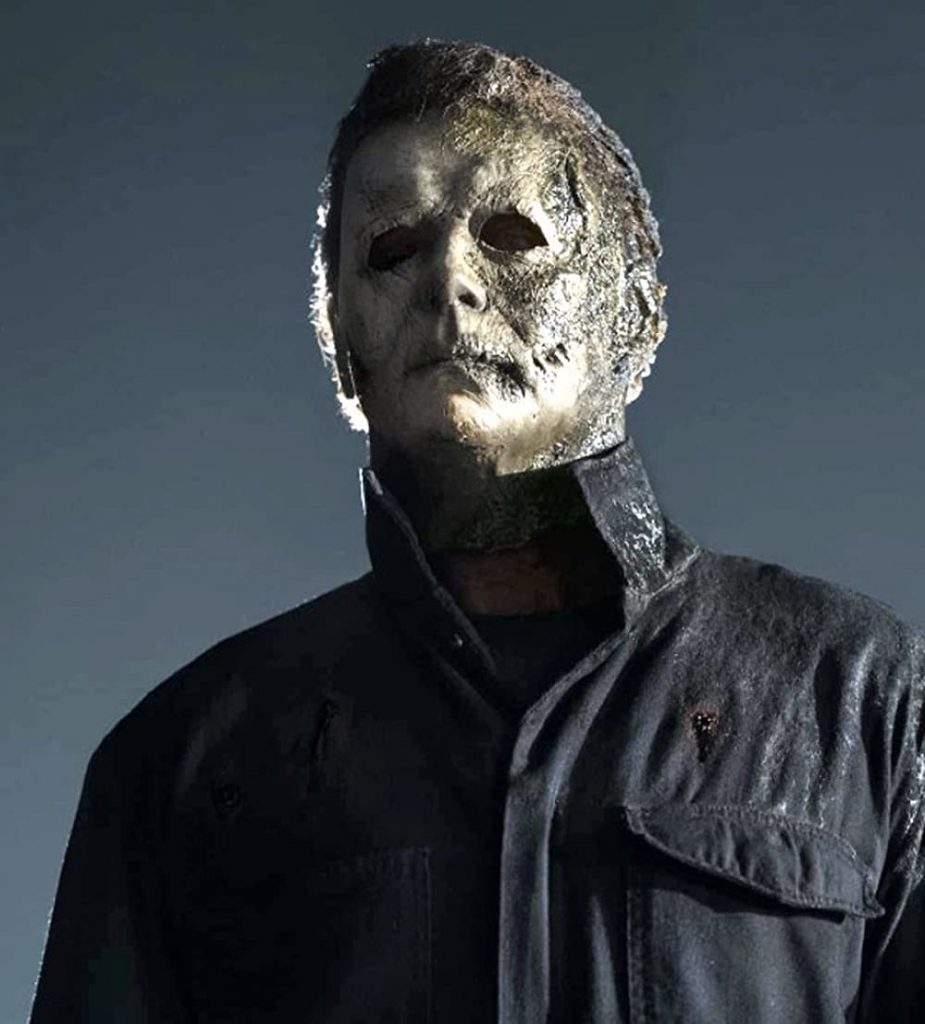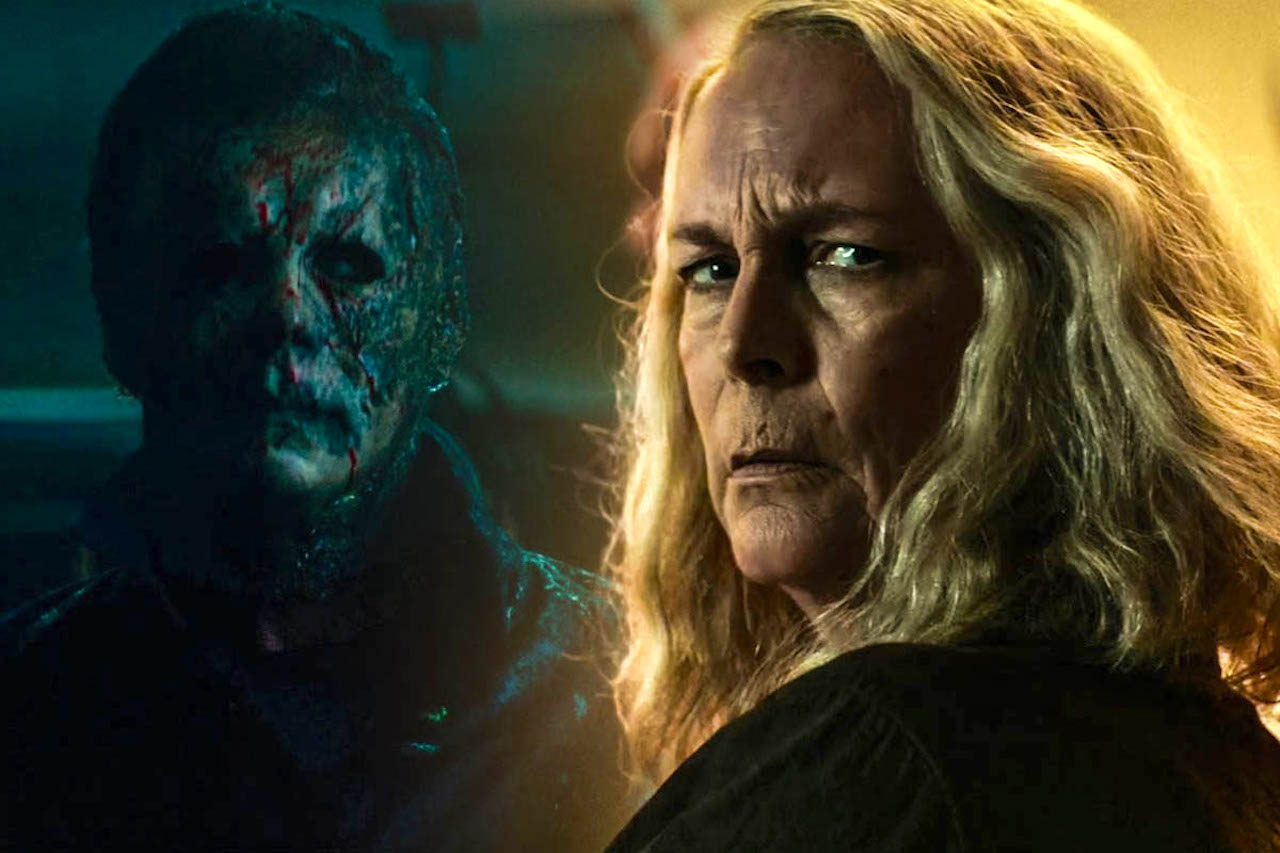“I have long been a Halloween fan as well as a John Carpenter fan,” confessed screenwriter Chris Bernier. “I consider John Carpenter to be my gateway into filmmaking. The energy and feeling in his films show that he really understands story.” Bernier tapped into this vein and began his foray into making horror movies.
Chris represents a quarter of the writing team for Halloween Ends. The other screenwriters are David Gordon Green (who also directed), Danny McBride, and Paul Brad Logan. Bernier and Green have been acquainted for many years and collaborated over many horror projects. Green came through the ranks as an indie comedy director while Bernier considers himself a genre writer. “David and I played on the fringes for many years and sold some TV shows which were never produced.” David Gordon Green finally made Hollywood pay attention to him as a serious horror director when he helmed Halloween (2018). He was slated to direct two more Halloween movies (Halloween Kills and Halloween Ends) and began discussing a potential partnership with Chris Bernier. Their long-standing friendship allowed them to organically discuss what these Halloween sequels might look like.
Blumhouse Pictures co-produced the project. “They really look to empower their directors and gave David Gordon Green a lot of latitude,” Chris continued. That said, David felt a strong responsibility to honor the original Halloween (1978), the fanbase, and the legacy. “I’ve yet to meet a Halloween fan that didn’t feel that the original wasn’t the best Halloween film, and probably by a wide margin,” he declared.
Halloween DNA
“We weren’t looking to make a cover song of the original. We took the DNA of the original movie and decided where those ingredients meet.”
Having such a solid original film sets the bar high for any sequels. “In some ways it makes it easier, and in some ways makes it harder.”

Chris Bernier
In addition to treating the material with the utmost care and respect, the writing team ensured they didn’t repeat any storylines from the previous sequels. “The bigger issue was getting into the DNA of what makes a Halloween movie,” said Bernier.
Everything stems back to the original 1978 Halloween. “There are components that you can draw out and distill the repeatable components and building blocks of the franchise.”
Chris Bernier claimed there wasn’t a master template off of which each Halloween film is based. “That would be too constrictive.” There is however, a master document containing the character and story details. “For example, how Michael Myers moves. Is he a man? What other qualities does he have?”
Michael Myers is often referred to as a “Shadow Ninja” and as “The Shape” in Halloween Ends. “He has a slight supernatural quality in how he can mysteriously move in and out of spaces.”
Michael Myers (James Jude Courtney) is the embodiment of pure evil, and his character traits need to be clearly defined and consistent. “There’s an identity and sense of what he represents and we told the story through his philosophical prism. The world needed to be believable and sustainable.”
“Michael Myers is effectively Jaws terrorising a town. We don’t know anything else about him. What motivates him?” The unanswered questions added to his mystery.
“The less we know about him, the scarier he is. More character details will humanize him and reduce his effectiveness. It was better to leave him as the Boogeyman.”
Michael Myers is a philosophical prism of how people perceive evil in an exaggerated sense
One of the challenges of the Halloween franchise is to maintain the killing machine mystery beneath the mask while keeping him interesting. “The recursive quality was his undefined, elusive nature becomes the object of fascination and obsession in the characters in the movie. If he kills people close to you, he occupies a more pervasive place in your psyche.” The other characters are viewed through a Myers looking glass. He is a dark reflection of all of us on a subconscious level.
This core DNA allowed the Halloween franchise to flourish. John Carpenter began with a sold core of an idea and infused it with ideas surrounding him. He didn’t necessarily ask how he might create an iconic killer that transcended decades. He just made the best film he could with the resources he had at the time.
The curse that unleashes every Halloween night “is a residential, relatable reality of Americana that can be tracked across decades.” When you divert too far from the core DNA, it loses its footing and the magic gets lost. You can only subvert it. “Halloween is mean and nasty and lives in that spectrum. That quality needs to stick with it.
They aimed to capture that Carpenter energy in a “creepy and foreboding way. It’s an historical relationship between a protagonist and her mortal enemy.”
Boogeyman In Your Town
Chris stated the impetus of many horror movies from the 1970s was a response to the trauma of Vietnam. “It was the horror next door, the boogeyman, the monster in suburbia. This was part of the effectiveness of the original film – a familiar world with an unfamiliar element.” Halloween is distinct from the supernatural, paranormal, and other-worldly monsters in other horror movies.
Laurie Strode (Jamie Lee Curtis) also had specific relatable qualities. “She endured the trauma of the ongoing struggle and crisis from the original babysitter murders. She’s the center of the movies trying to slay the beast.” Much of the Laurie’s character is informed by Michael Myers’ behaviors which she uses to attack him.
Laurie’s character evolves in three stages as she processes the grief after dealing with Michael Myers. “In the 2018 Halloween film, she’s preparing for the return of Michael Myers because she’s never been able to resolve him within herself. In Halloween Kills (2021), she’s dealing with the immediate aftermath of Myers returning and killing people within her life, and almost killing her.”
“The evil is punctured and spills out over everyone else. In Halloween Ends, people are trying to return to a level of normalcy. As much as she tries to put the evil back in the bottle, she’s continuing to ask the question of what is good, what is bad, based on what we bring on ourselves based on our deepest dysfunctions and paranoias, and what is real and what is lurking all around us?”

Allyson (And Matichak) & Laurie Strode (Jamie Lee Curtis) Photo courtesy of Universal Pictures
The town of Haddonfield is also a character in Halloween. “It starts as an everyday, middle-class town and becomes a place drunk with evil. It ends up as a town with an evil residue lurking and this effect on the residents. How does this change who we are and how we treat each other?”
The Writing Process
Unlike many studio projects that are assigned to serial writers, Halloween Ends was truly written by committee much like a television series. They controlled their urges to repeatedly refer to John Carpenter for advice and approval.
“We deliberately avoided excessive input from John Carpenter because he might burn our collective creative synapses and then we wouldn’t be able to see clearly anymore,” joked Bernier. David Gordon Green had an ongoing dialogue with John Carpenter, who provided limited feedback to him, but this communication was minimized.
The four writers worked as a unified whole and spent countless hours holding either in-person or online story meetings. “David [Gordon Green] leveraged the different strengths we each brought to the table with him at the helm making final decisions.” David kept making changes right up to the days of filming.

Michael Myers (James Jude Courtney) Photo courtesy of Universal Pictures
“Paul Logan was recruited from David’s stable of writers with whom he previously worked. Paul came from more of an indie sensibility and was most mindful of character details and voices. I was more focussed on the narrative construction and thematic undercurrents of the screenplay.”
Bernier’s encyclopaedic knowledge of the Halloween franchise allowed him to lean into the world building and mythology of the story. His major contribution to Halloween Ends is defining the narrative architecture of the story of Laurie Strode (Jamie Lee Curtis) and her granddaughter Allyson (Andi Matichak) four years after the last two Halloween films. “Thinking how we got into that space and the progression of the narrative was a lot of what I brought to the table as we pitched ideas as we went.”
“Danny McBride, another long-term collaborator with David Gordon Green, provided a more aerial view of the story to direct the progressions of the movements. Then we’d all switch hats and refine the script.”
This writing approach has also been tested on various Marvel and Transformer films. “The physical writing was a matter of being assigned scenes and then trading them for feedback.”
Halloween Ends has high ambitions because it is the swan song to an iconic movie franchise. “It was important for me as a writer to not let my reach exceed my grasp. You can have the right thematic intention and design in a meaningful way, but also deliver a fun and scary movie.” This all came down to tonality to balance tone and entertainment. It was a delicate balance between a grandiose ambition within a contained horror film. “Characters had to find their invincibility in the moment.”
Chris Bernier subscribes to the Paul Schrader school of screenwriting, “Make things bigger by making them smaller.”
